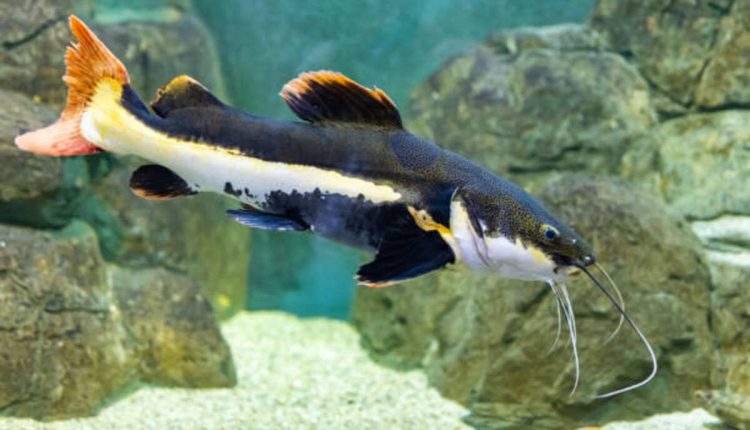Redtail on the River is an elegant student apartment community featuring modernized apartment interiors and engaging community amenities designed to help students succeed while making them feel at home.
The wild redtail garra, an aquarium fish widely appreciated for its beauty and unique qualities, was only recently scientifically described using specimens collected from its native environment. Prior to this discovery, this species lived relatively unnoticed.
Location
Redtail catfish can be found throughout the Amazon rainforest in tannin-stained rivers and lagoon waters, congregating around rock outcroppings, giant boulders, waterfalls, deep holes under waterfalls, and quiet lagoon waters at five to six feet depth.
Slow-moving sportfish such as trout are easy to locate and fish for with both bait and artificial lures. Their advanced senses enable them to sift through rocks at the bottom of bodies of water with ease; you can find trout all year long; however, their numbers increase during rainy seasons when other sportfish species may become scarcer.
Fishing for redtails at its peak occurs early morning or just after sunset during a dark moon phase in river holes early and late. They are most commonly caught using whole piranhas or small species as bait; during daytime hours, they prefer waiting in current lines for bait to drift by them.
The South American Red Tail Catfish (Pimelosodidae) is an aquatic creature belonging to the order Siluriformes and the family Pimelodidae. Generally found in the Amazon River basin in Ecuador, Colombia, Guyana, and Venezuela, but also seen in the Orinoco River basin and Essequibo River Basin of Brazil.
Habitat
Redtails typically hunt on land and are known to chase their prey around trees and across forest floors. Their eyesight is excellent; they can detect movement at a great distance. Furthermore, their hearing allows them to see movement far away; additionally, they often find prey through scent.
Garra hydroxide fishes feed on algae and small crustaceans, scraping detritus off rocks with its special mouthpart. Their sensitive barbels contain chemical reception cells used to recognize chemical signatures in prey. Unfortunately, like other members of its genus, Garra hydnodes is known for being aggressive with other fish, perhaps explaining why aquarium life in small groups might not suit it well.
Garras fishes typically prefer moderate to swift waters of large rivers and their tributaries, reservoirs, and pools with silt and sand bottoms for habitat. Popular among indigenous peoples of the Amazon region as a food source; also an essential element of pet trade aquaria displays depicting Amazonian themes.
Garras are peaceful bottom dwellers that make an excellent addition to larger tanks such as those housing tiger shovelnose catfish. Unfortunately, however, their presence requires plenty of dark hiding spaces; any disruption caused by territorial disputes between individuals should be mitigated by keeping multiple groups together.
Feeding
Redtails are omnivorous fish that require a varied and balanced diet to thrive in captivity or the wild. While in nature, they feed on crustaceans, insects, and aquatic organisms; while in captivity, they may receive commercial fish foods or live/frozen items such as bloodworms or brine shrimp. Red-tails also enjoy vegetable snacks like spinach and zucchini as part of their diet and occasionally may consume shrimp, although this should not comprise their primary meal source.
Redtails should be housed in water that features low pH levels and moderate hardness levels for optimal health, as these fish are sensitive to changes in water quality and may suffer health problems if conditions don’t meet optimal standards. These problems include fin rot caused by bacteria infections, which results in frayed or discolored fins; other symptoms may consist of sluggish behavior and loss of appetite; flukes affect both skin and gills of fish and can even spread into their internal organs via parasitic infections; these diseases can be treated using medications; however copper and potassium permanganate treatments must be avoided as these may poison scaleless species such as redtails causing even more significant health issues!
Monitoring redtail feeding habits is critical, as overfeeding can cause bloat, constipation, and swim bladder disorders in these animals. Furthermore, large quantities of protein-rich freeze-dried krill could bind calcium from their systems and compromise their well-being.
Breeding
Redtail catfish is an eye-catching species with a distinct appearance that makes for an eye-catching aquarium fish, though their requirements can be undemanding, and they can reach large sizes. Opportunistic feeders consume various forms of small fish, crustaceans, plants, and invertebrates in captivity – such as small fry from other tanks, as well as crustaceans from marine environments. A fine sand substrate provides the ideal environment for these fish due to allowing sensitive barbels access through it while supporting healthy water conditions – while sizeable smooth river rocks can also help mimic their natural environments while hiding spots for these fish!
Redtail pairs are highly territorial birds that will remain together for years. They patrol their territory for any intruders and defend it aggressively; additionally, they can protect a nest from predators and guard spawning sites aggressively.
Redtails can be challenging to breed in captivity, unlike other freshwater fish species. The key to successful retail breeding lies in providing quality water with regular changes and efficient filtration systems; the temperature should range between 68-80F, while pH levels should fall under 7. Additionally, caves or tubes provide hiding spaces where redtails can lay eggs safely.


Comments are closed.